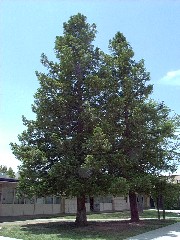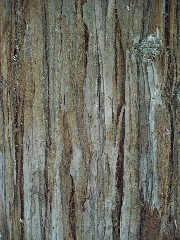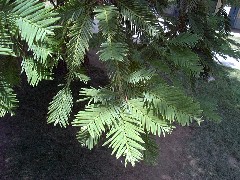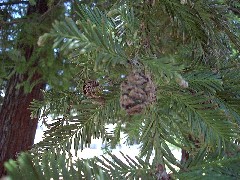Coastal Redwood
Sequoia sempervirensCupressaceae
Podcast script
| Redwood tree |
Redwood bark |
| Redwood leaves |
Redwood cone |
Classification:
Gymnosperm, Conifer, evergreenSize:
Coast Redwoods can commomly grow up to 200 feet but many exceed that, with the tallest recorded redwood being 379.1 feet making it the tallest living thing today. According to Nature magazine, 380 feet is no the redwood's full potential and could grow to a maximum height of 400-425 feet tall before gravity and the friction between water and xylem, prevent further growth upwards. The redwood also can get a large trunk diameter, the largest being 23.68 feet.Identifying Features:
The coastal redwood can easliy be identified. One of the more obvious features is that it is usually very tall if it has been there long enough. Other features include how its needles are arranged on the branches, when looking at the picture of the leaves look at how the end of a branch starts to branch out more and more near the end, enabling more leaves and surface area. The bark is easily identified as well, the bark is very thick and has gouges, two features that help the redwood in the event of a forest fire.Location/Habitat:
Coast Redwoods grow in an area of along the pasific coast 470 miles long and anywhere from 5-47 miles in width. The elvations that the redwoods grow at can be anywhere from sea level to 3000 feet above sea level. The nrothern boundry of this area are two groves at the Chetco River near the California-Oregon Border and goes south to a grove in Salmon Creek in South Monteray County.Distribution map
Flower/Fruit/Reproduction:
Redwoods use seeds from cones to reproduce. They drop seeds aproximatly 1/8 inch in length and fall about 200 to 400 feet fromt he parent tree. Then within the next month the seed will grow, as long as the soil it has landed in is fresh, moist and warm, to a hieght of 5 to 7.5 centimeters in height.Water/Sun Requirements:
The Coastal Redwoods live in the area they do for the unique weather, which includes an average annual rainfall of 100 inches. The area, because of its proximity to the coast, has heavy fog year round that keeps the area very damp year round.Special Adaptations:
One of the most important adaptations that the Coastal Redwoods have is that they can obtain all of their required nutrients by recycling the nutrients from dead trees, which is important because the constant dampness of the area they live in makes the soil nutrient defisiant. Because the tree is so reliant on the rotting fallen trees, logging becomes even more of an issue.Other Info:
- Possibly named after Native American cheif named Sequoyah
Reference Sources/Links:
Made by Chris D 2007http://en.wikipedia.org/wiki/Sequoia
http://www.humboldtredwoods.org/redwoods.htm
http://www.askmar.com/Redwoods/Coastal_Redwoods.html
http://www.sfgate.com/getoutside/1996/apr/rwecology.html
http://sunnyfortuna.com/explore/redwoods_facts_02.htm
http://bss.sfsu.edu/holzman/courses/Fall99Projects/redwood.htm



